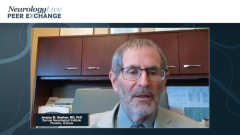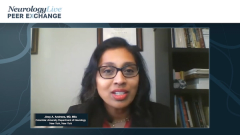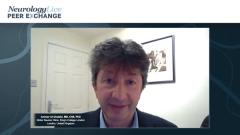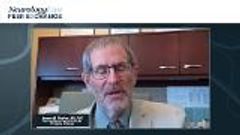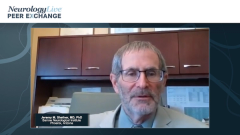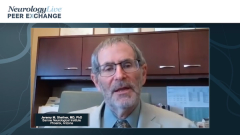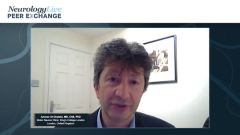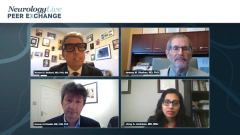
Building a Dialogue on Life Sustaining Care in ALS
Panelists share approaches for building a dialogue on life sustaining care such as invasive ventilation and discuss the importance of social and cultural factors for patients and families.
Episodes in this series

Richard S. Bedlack, MD, PhD, MS: Jinsy, in spite of our best efforts, many times our patients progress to where we have to have a difficult conversation about whether they want to have invasive ventilation through a tracheostomy vs a less aggressive approach where they would work with hospice. When do you initiate that conversation, and what does it look like?
Jinsy A. Andrews, MD, MSc: I have the desire to initiate that conversation, that discussion, and that thought process as early as possible. When someone comes in with a diagnosis of ALS [amyotrophic lateral sclerosis], I want to try to inform them of all the options through the journey, but it is overwhelming. I try to talk about it before a decision has to be made. I try to make sure that the family is involved in that discussion because I have often had situations where even a spouse or a child might think differently, or I am dealing with a very large family where half the members feel 1 way and half the members feel another way. Of course, being in New York City, I deal with a lot of different cultures that have different requirements about end-of-life decisions and about invasive ventilation.
In New York, New Jersey, and some other states in the United States, it has been made a lot simpler because there has been a form developed that is basically a medical order for life-sustaining treatment. I am able to use this document as a guide. When people have not thought about it, it serves as a conversation starter to think about the things they need to do. It has made it a lot easier for me to introduce the topic. Previously, if people had to make decisions, they would have to get a lawyer and get a legally executed document of advanced directives, living wills, and health care proxies. This life-sustaining treatment form, as it exists in different versions in different states, helped not just guide the conversation but also allow it to be a decision between the health care team and the patient and their family.
More important, it is flexible. When they then come back, I review it. If they decided 1 thing last time but feel differently because the body has changed in some way or they have had a different thought, we can revise it. It has some flexibility and simplicity to it. We will often talk about it; the conversation usually starts for me when we start talking about noninvasive ventilation and feeding tubes. The conversation usually digresses over to that territory.
We are often successful in getting decisions way before, but people sometimes do not want to talk about it. There are many reasons: It is not just because they are just in denial. There are sometimes cultural attitudes about having open discussions about it and having that be a negative influencer in what their destiny shall be. It has been interesting to learn the different backgrounds and cultures and trying to adjust ourselves and how we deliver our health care. I do not know how it is for you, Jeremy, or Ammar.
Jeremy M. Shefner, MD, PhD: You are right. The desire to talk about it on your part does not always mesh with the desire of the patient to listen to it. I also think of this conversation as a Rorschach test for your own personality. I hope we get to clinical trials eventually, but 1 common point about clinical trials that Rick points out is that the likelihood of a patient getting into a clinical trial is incredibly dependent on the enthusiasm and commitment of the physician. To some extent, this discussion is a bit analogous in that it is hard to have this discussion without your own biases coming through.
I do my best to present the procedure and the life after having a tracheostomy and being chronically ventilated as objectively and unemotionally as I can. I find that, after I do that, I almost never have anybody who chooses to become chronically ventilated. I have accepted that that says something about me and my own attitudes toward life, but I do think that, to the best one can, one has to make the conversation about what their attitudes about life are and, as much as possible, a realistic expectation of what things will be like after the procedure.
Richard S. Bedlack, MD, PhD, MS: Any last words, Ammar?
Ammar Al-Chalabi, MB, ChB, PhD: Yes, that it is a similar experience here in the United Kingdom. Although it is discussed, many people do not take up the option. The people who have taken up the option, are invariably positive about that, in my experience. Nowadays, that is probably even increasing because we have technology that did not exist some time ago. For example, Eyegaze technology is vastly superior compared with what it was 10, 15, or 20 years ago when you had to use a board and hope someone could see what you were looking at.
There are communication options available to people and beds that are more comfortable. All the technology has improved to make the experience better than it was, so that is probably why everybody I speak to is positive about it. Emotionally, it is quite a frightening thing for most people to consider because you will eventually be locked in on a ventilator. That is a frightening thought.
Jeremy M. Shefner, MD, PhD: I have 1 small counterpoint: The experience is similar in the United States in that people who choose to become ventilated are happy with that decision. The data that I am aware of, though, suggests that it is incredibly stressful for the caregivers. The caregivers do not have anything close to the same view of it. We are taking care of the patient, but it is a family disease.
Richard S. Bedlack, MD, PhD, MS: Thank you for watching this NeurologyLive® Peer Exchange. If you enjoyed the content, please subscribe to our e-newsletters to receive upcoming Peer Exchanges and other great content right in your in-box.
Transcript Edited for Clarity
Newsletter
Keep your finger on the pulse of neurology—subscribe to NeurologyLive for expert interviews, new data, and breakthrough treatment updates.


